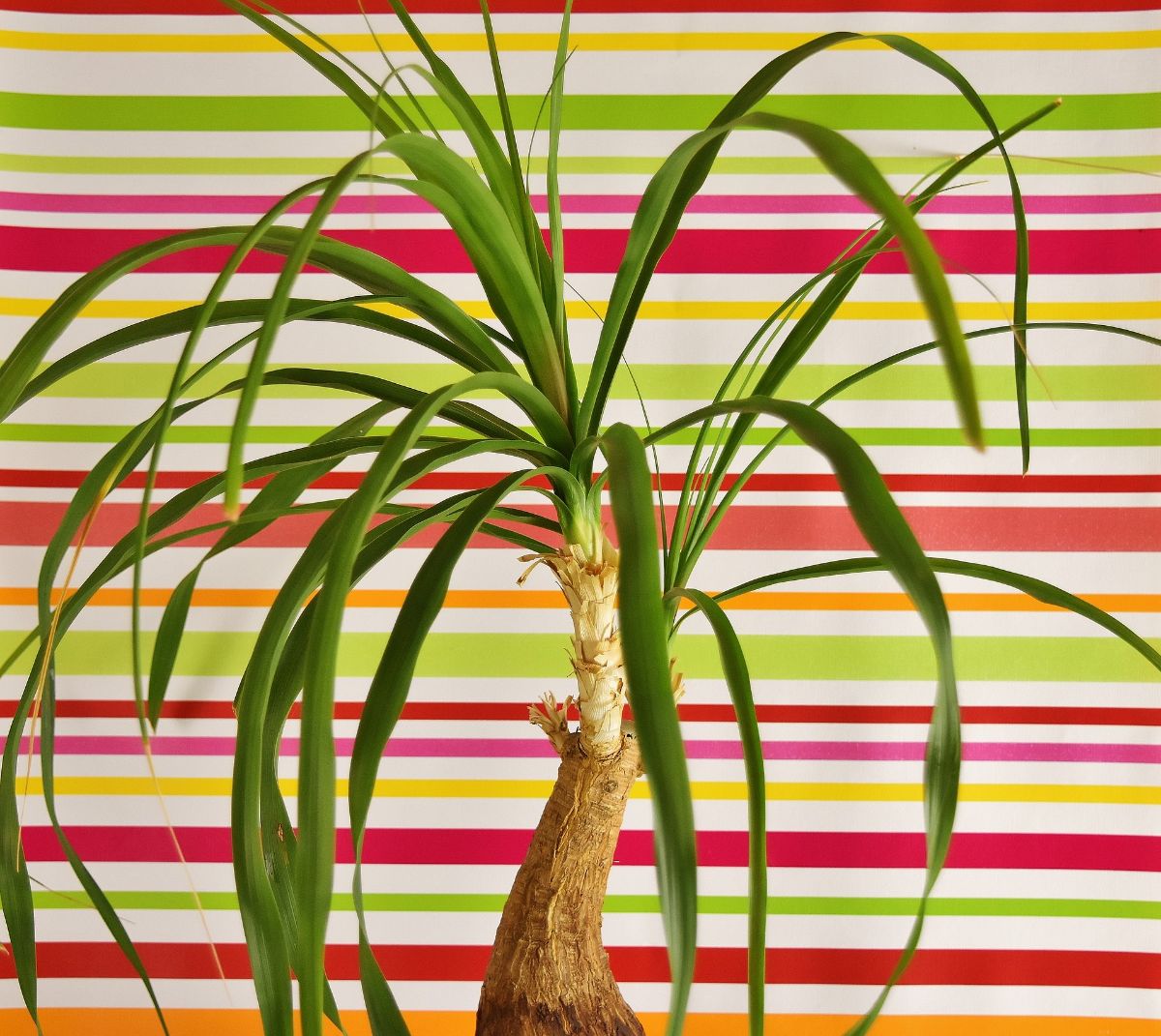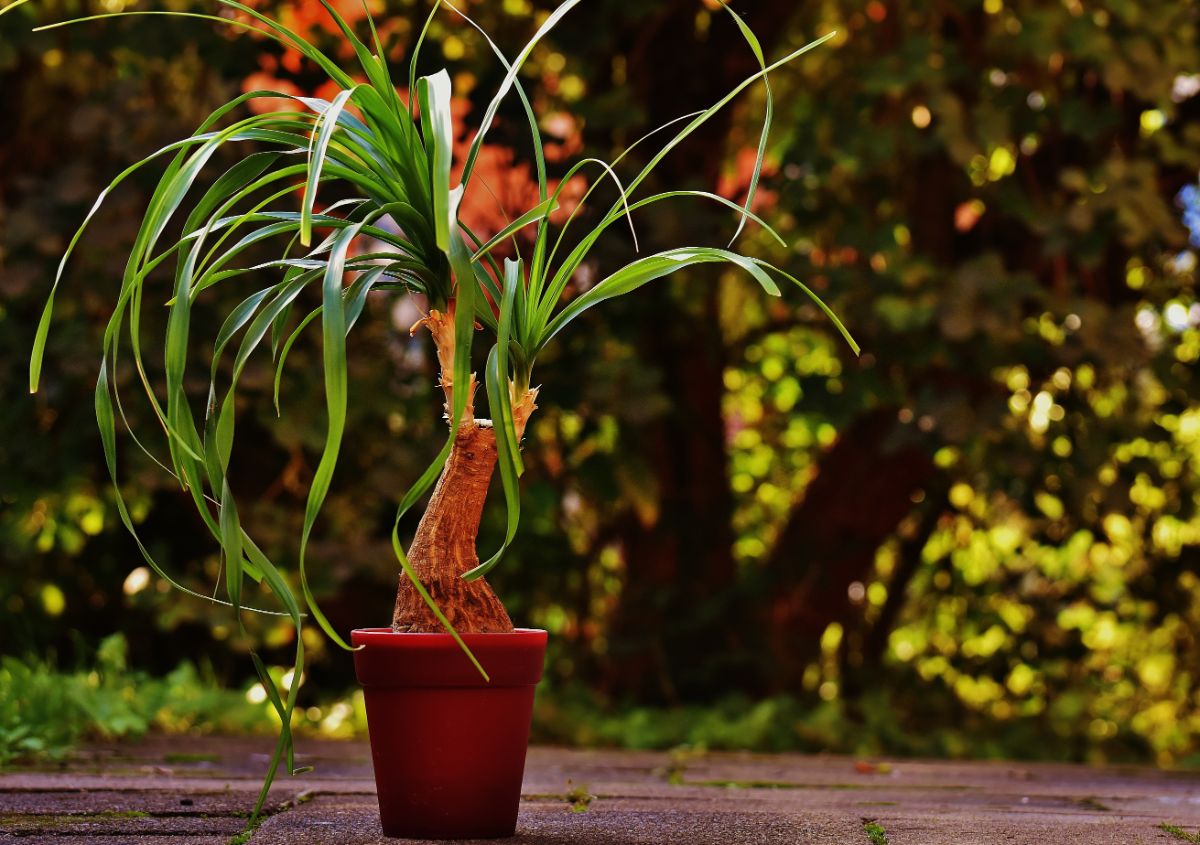
Plant beaucarnea, better known as «elephant foot», it is one of the most appreciated in gardens, terraces and inside houses for its size and presence. However, due to the needs of the plant, it is very easy for it to die, and that implies being very aware of it so that this does not happen. But what to do if it happens? How to revive an elephant foot plant?
Starting from the fact that the elephant plant is not eternal, nor does it revive like the phoenix, if you catch it in time you can remedy that evil that is killing your plant. Now, you have to know how to work with her to give her the basic care that she will require.
Caring for the elephant's foot

Before talking about how to revive an elephant foot plant, it is convenient that you know what the basic care of this is so that you can provide them and, in this way, not have to go through the following or resort to the advice that we are going to give you. continuation.
In general, the elephant foot will need:
Lighting design
It goes to depend on whether you grow it indoors or outdoors. If you put it in the garden, that is, outside, you can easily place it in a semi-shady area since, although it needs the sun, it does not need to spend many hours giving it, because it can burn its leaves.
If you put it indoors, things change. To begin, you should know that you have to place it in the most illuminated area, and provide it with as much sunlight as possible.
Temperature
The elephant foot plant is a plant that develops very well between the 18 and the 26 degrees. It could withstand up to 28 degrees; while, on the other hand, at temperatures below 10 degrees he would suffer and begin to deteriorate his health.
Irrigation
Irrigation is one of the keys to the well-being of the elephant foot plant, and also where more people who have one fail (hence the revival of an elephant foot plant).
The irrigation of this should be only twice a week in summer, when the temperatures are quite high; However, in winter things change, and you should reduce it quite a bit (once a week or even every 15 days, depending on which area you live in).
You must bear in mind that the elephant foot is considered a succulent plant and it stores water in the roots and in the lower part of the trunk, that is, in the part with the widest trunk.
Another key about watering is how to do it. We recommend that you add the water and, after 20-30 minutes, remove the excess water to avoid that this accumulation can damage the roots of the plant or that there are accumulations of water between the earth.

Fertilizer
Fertilizing the elephant foot plant is not as necessary as with other plants. In general, paying in spring and summer once a month is enough, but it is not very necessary either. We recommend that opt for an organic one.
In winter it is not good to pay it.
Pruning
Pruning of this plant is simply limited to a maintenance, that implies that it can be done at any time of the year and consists of removing the leaves that are ugly, dry or damaged to avoid that they do not look (and encourage the development of new leaves).
Also cut off the parts of the leaves that turn brown, because they are not doing the plant any good.
How to revive an elephant foot plant

There are many problems for which you need to know how to revive an elephant foot plant, most of them related to a mistake in basic care. But, if you have an elephant foot with these problems, you can resurrect it, or at least do everything in your power to do so.
If your elephant foot is dry
As you know, the elephant foot plant needs low watering, but it doesn't mean that you should let it dry out. If that happens, you will be putting her at risk, and she could die.
How to revive it? Well you must start by cutting the dry branches, and the tips of the leaves that you see brown or dry. Then, place it in an area of light but without direct sun.
Finally, water the plant abundantly and wait for the soil to moisten well. If you see that it is cracked, it is better to transplant it because the soil is no longer the most suitable for the plant. Remember that you have to remove the excess water a few minutes later.
If your elephant foot is flooded
If before we have told you to water the plant abundantly, it may be the case that this is a habit and, therefore, you end up drowning the plant. The watering in this is constant, but an excess of watering can be deadly for her.
Therefore, if it happens to you, the way to revive an elephant foot plant is remove it from the pot and remove all the wet soil you have, to put it in the pot with new and dry soil. In this way you will be eliminating excess moisture more effectively and quickly (without waiting for it to evaporate).
Place it in a semi-shady area, but give it several hours of sunlight a day. And wait to see how it reacts to change it to a sunnier one.
What if it doesn't work? Try to control the humidity of the soil and the plant in general. Sometimes it is not caught on time and, no matter how much you do, you do not get the results you expect. But at least you will have tried.
Diseases and pests of elephant foot
Both pests and diseases can attack the elephant foot plant, causing its health to decline to the point of killing it. To avoid this, it is important that you monitor the state of the plant, to see if they appear in it fungi, mealybugs, aphids ...
If you detect them, you should apply effective treatments against these pests and diseases focused on the elephant foot plant.
If you have problems with your elephant foot and you want to revive it, contact us and we will try to help you keep the plant with you for many years.